Company Car in Action (CCIA) is the UK’s most comprehensive driving event for fleet decision-makers and influencers. This year’s event, held on June 12-13 at the Millbrook Proving Ground, saw just more than 1,000 visitors drive 300 vehicles, from 16 leading manufacturers.
As well as putting a host of vehicles through their paces around Millbrook’s four unique, purpose-built test tracks, visitors were able to attend the CCIA Knowledge Hub and meet key suppliers including ACFO, Alphabet, BP Chargemaster, Glass’s and Licence Bureau. The Hub explored topical debates on driver wellbeing and played host to an EV (electric vehicle) Question Time session discussing how and why fleet decision-makers should add EVs to their fleets, along with the potential pitfalls and challenges.

This year’s expanded Zero and Ultra-low Emission Zone gave visitors the opportunity to evaluate the latest electric and hybrid vehicles.
Industry experts from both manufacturers and suppliers were on hand to discuss the shift to new fuel technologies, giving visitors invaluable insight into the viability of zero and ultra-low emission fleets.
And it was the rapidly increasing focus on zero emission and ULEVs which dominated the manufacturers’ strategies and the cars showcased at this year’s event.
Vehicles on display included: BMW 330e (plug-in hybrid); Honda CR-V (hybrid); Jaguar I-Pace SE (pure electric), Kia e-Niro First Edition (pure electric), Renault Zoe i S Edition R110 Z.E. 40 (pure electric), Toyota Mirai (hydrogen) and Volvo XC60 T8 (plug-in hybrid).

For a video of the event click here.
BMW brings forward electric car plans
BMW is to accelerate its electric car plans and launch 23 electrified models by 2023, two years ahead of its original target.
Of these, five fully electric vehicles are due by 2021, with the i3 set to be joined by the Mini Electric this year, the iX3 in 2020, and the iNext and i4 in 2021.
This broad product range, says BMW, reflects a changing market.
Rob East, general manager, corporate sales at BMW Group (UK), says: “We see a changing global market, changing global expectations and electrification is a fundamental part of our strategy.
“Four new electric BMW models will be coming in 2019: we have the launch of the updated i3 with a 120-amp battery from midway through this year, the new 330e plug-in hybrid, the X5 45e PHEV and will also have the facelifted 7 Series with 745e and Le plug-in hybrid variants.
“The cars that are really critical for us are the 330e, which has an electric-only range up to 37 miles and less than 40g/km, and the X5 45e which offers up to 50 miles and less than 50g/km.
“We are seeing significant corporate demand for PHEV SUV products, particularly in fleets which have fewer policy restrictions.”
Ford sees hybrid and plug-in hybrid as transition to full electrification
Ford believes the route to full electrification will be a transition that incorporates hybrid and plug-in hybrid as companies build their confidence and awareness of alternative fuels.
“Different customers and their differing requirements mean different levels of readiness for electric and we have to help them through this transition,” says Owen Gregory, Ford UK fleet director.
“We see a balance and blend of technologies that bring different parts of the transition in terms of electric performance and availability.”
Ford’s launch plan begins with the 48-volt mild hybrid solution which is introduced in the Transit and Transit Custom this summer.
Gregory describes it as a “good first step towards electrification” for drivers who need a combustion engine but want to reduce emissions.
“That will increasingly come to our passenger vehicles in 2020,” he adds.
Next step is a range of self-charging hybrids. A hybrid Mondeo saloon has been available for a few years, but has sold in limited numbers due to the four-door body shape. Hybrid will shortly be added to the estate, with indicative CO2 emissions of sub-100g/km and, from 2020, the Kuga.
In the fleet sector, previously dominated by diesel, this will result in “a much richer mix of self-charging hybrid”, Gregory predicts.
Ford has already been extensively trialling plug-in hybrids with its fleet of 20 Transit Customs in London. The initial pilots have ended, giving more potential customers the opportunity to test the vans.
“The use case for full electric for CVs is narrow but we are able to open up the use case with plug-in. We will also be able to share our insights from the trials with other customers,” says Gregory. “We are now moving into mainstream production.”
In addition to the panel van, a combi Tourneo will also come to market; details on pricing and emissions will be available in the next few weeks, with residual forecasts no later than August, enabling customers to assess total cost of ownership.
Kuga will be the first plug-in hybrid passenger car in 2020, “a good and natural choice for company car drivers”, claims Gregory.
“This year into next, we will see a real shift in the breadth of powertrain available across our cars and light commercial vehicles,” he says.
Ford is ramping up its support for customers with investment and training into its field teams, particularly for vans, and is also investing in a joint venture collaboration with the Ionity charging network.
Ionity is planning to open 400 super-fast 350kW charging sites across Europe, including 40 in the UK, by the end of next year. The first one opened in May off J8 of the M20 in Kent.
“2020 to 2030 will be the decade of transition. The unknown is the tipping point, but my view is that the mid-point of the decade is where we get into mainstream acceptance,” Gregory says.
Until then, diesel and petrol still have a major role to play.
Consequently, Ford is continuing to invest heavily into internal combustion engine technology to ensure it can offer suitable low emission solutions to fleets.
Honda takes 'first step' towards electrification
The Honda CR-V hybrid, which featured at this year’s CCIA, is seen as the “first step” in the manufacturer’s electric journey.
At the 2017 Geneva Motor Show Honda announced its plans to have two-thirds of all automotive powertrain sales electrified by 2025.
This ambitious goal was ramped up at this year’s Geneva show with an increase to 100% of sales of Honda cars to feature an electrified powertrain from 2025.
Phil Webb, head of car at Honda UK, says: “The first step in this journey was the launch of the CR-V hybrid at the start of this year.
“The CR-V hybrid is the first car in Honda’s line- up to feature Honda’s i-MMD (intelligent Multi Mode Drive), which automatically switches between three driving modes to provide the highest possible efficiency.
“Sales of the hybrid have been strong and we have experienced a high demand from our fleet customers.”
Honda recently announced that the next generation Jazz will be available with a hybrid powertrain. It is due to be launched at the Tokyo Motor Show in October and will be the second car in the line-up to benefit from intelligent Multi Mode Drive.
“A third of all sales for the current Jazz are to fleet customers and we see this enthusiasm for the car not changing when the next generation arrives,” says Webb.
Meanwhile, the much anticipated pure electric Honda e will also be available to fleets from early next year.
With a 35.5kWh battery that will deliver a range of 125 miles and is capable of charging 80% in 30 minutes, Honda is expecting strong take-up from fleet customers.
The mass production version is due to be launched later this year, with the car on sale before the end of 2019 and the first customer deliveries in early 2020.
Renault reports 'significant' interest in EVs
Renault gave visitors to its stand at this year’s CCIA a glimpse of the all-new Clio, which goes on sale in the autumn.
Like many manufacturers at this year’s show, hybrid and fully electric models look set to feature heavily in future launches.
New Zoe will be launched later this year, as will new Master ZE, and next year Renault will reveal a Captur plug-in hybrid electric vehicle (PHEV) alongside a hybrid Clio.
The manufacturer has already been helping fleets make the switch to EVs, with two electric vehicle fleet specialists able to advise operators.
Mark Dickens, head of fleet sales operations and remarketing at Renault, says that has already paid dividends, with a “significant increase” in the adoption of EVs by fleets.
“We believe that will increase more over the next few years, especially as CAFE (Clean Air for Europe) regulations drive manufacturers to meet EU emissions targets, in both car and LCV,” he says.
However, he stressed that there will always be a place for diesel cars and vans.
“Diesel can often be the most efficient as well as cost-effective choice for users who cover long distances,” says Dickens.
“As an example of our continued commitment to cater for these drivers, the all-New Clio, which arrives in right hand drive form in the UK in October will be available with the dCi 85 engine from launch.”
The new diesel engine will be equipped with the latest selective catalytic reduction technology to trap and treat nitrogen oxide (NOx).
Seat will 'emerge as central player in EV technologies'
Seat will emerge as a central player in electric vehicle technologies, says Peter McDonald, head of fleet and business sales at the manufacturer.
As part of its strategy to offer six fully electric or plug-in cars by 2021, Seat recently announced its first fully electric model – Mii Electric city car – with first customer deliveries due early next year.
It unveiled its El-Born fully-electric concept car at the Geneva motor show earlier this year, while it will also launch plug-in versions of the next-generation Leon hatchback and Tarraco SUV.
McDonald says Seat is very positive about the potential of hybrids and EVs in fleet.
He adds: “Seat is embarking on an extremely exciting period in which we will emerge as a central player in EV technologies.
“We believe we have a strong proposition in the short- and long-term, with the Volkswagen Group as a whole and Seat committed to a high level of investment in products and infrastructure.
“We believe fleet demand will be strong, especially in environments where low benefit-in-kind tax is important, including salary sacrifice and public sector.
“So the appetite is there and it’s growing. We see demand increasing from corporate end-user fleets. However, we believe the best option for each fleet will be highly dependent on the types of journeys their employees are making, and the access to infrastructure they may have at home, at work and on their journey.
“Ultimately, fleets may require access to all options including petrol, diesel, hybrid and EV.”
McDonald says Seat is working with the leasing industry and communicating with businesses to support customer requirements, ensuring it has the latest product data and information.
“It is our priority to support every customer in making the best choice for them and their fleets, using all the information available,” he adds.
“Even though the trend is for gradual acceptance of EVs, there will remain a need for a strong mix of powertrains for a considerable period.”
Suzuki see increase in hybrid vehicle orders
Suzuki has bold ambitions to grow its fleet business and has just finalised a new fleet strategy, which has seen around a third of its dealer network become Business Partners.
Following a tie-up with Toyota, next year the brand will launch two new models based on the current Toyota Corolla Touring Sports and the Rav4. This will expand its range of hybrid vehicles and give it access to two key fleet segments that it currently does not compete in.
Graeme Jenkins, head of fleet at Suzuki, says: “What we’re seeing, certainly from the leasing industry, is an increase in orders of hybrid vehicles and part of the reason for that is that we’re now on Crown Commercial Services for the public sector.
“We’ve seen a big spike in small car orders and a lot of those tend to be a hybrid derivative that naturally falls in line with the public sector.”
The brand’s model range includes two mild hybrids in the Swift and Ignis. Suzuki believes this type of powertrain is the most suitable for smaller cars as they are cheaper to produce and lighter.
Alongside these models at CCIA was the new Vitara, which is available with a 1.0-litre or a 1.4-litre turbocharged petrol engine.
Interest in the brand boomed earlier this year when it launched the new Jimny, a retro-styled small off-roader. With more than 10,000 expressions of interest it has become an unexpected ‘halo’ model.
Volvo’s entire range available in EV form by end of 2019
Following the success of the S90, XC60 and XC90 Twin Engine plug-in hybrids – which were all available to drive at CCIA – the brand has begun the roll-out of its new petrol and diesel mild hybrid powertrains.
Plug-in hybrid versions of the V60 and S60 will also be available shortly, joined by the XC40 before the end of the year.
Steve Beattie, head of business sales at Volvo, says: “Fleets are asking about our electrification strategy and what cars we have got coming. You can really start to see that companies are opening up their policies for plug-in hybrids and, indeed, fully electric cars.
“Plug-in hybrid really offers an alternative where people can make a step change. The great thing about going to a plug-in hybrid is you can almost drive on pure electric but you’ve got that back-up of a petrol engine if you need to go somewhere (on a long journey).
“It’s a good stepping stone for full electric. That’s what we’re doing well.”
Hybrids currently account for around 13% of the brand’s fleet sales, with diesel still taking the lion’s share of sales.
Beattie believes the V60 and XC40 plug-in hybrids will enable drivers in lower bands to access the technology and boost sales.
Volvo will launch a fully-electric version of the XC40 next year.
Vauxhall returns to the EV market with new plug-in hybrid
Vauxhall, one of the pioneers of plug-in hybrid vehicles with the Ampera, is back with the Grandland X Hybrid4, its first plug-in SUV.
The car, which features a 3.3kW battery with an optional 6.6kW version available, has CO2 emissions of 49g/km and a zero emission range of 30 miles, giving average fuel consumption of 128mpg.
Vauxhall intends to electrify its entire product portfolio by 2024.
Later this year, the full electric version of the Corsa will go on sale followed by an electric Vivaro next year and an electric Combo in 2021.
CCIA first drives
Among the highlights at this year’s Company Car In Action were a variety of first drive opportunities, where fleet decision-makers could get behind the wheel of some of the latest models before any one else.
To put the cars through their paces, we assembled a team of fleet managers from some of the largest and most prolific fleets in the UK. They were Chris Connors, group facilities and fleet manager at Countryside Properties; Stewart Lightbody, fleet director at M Group; Ryan Coles, group travel and fleet manager at Aviva; David Oliver, procurement manager at Red Bull.
The line-up of cars covered a broad range, including diesel, petrol-hybrid and electric. We asked the fleet managers to assess them based on how well suited they would be for fleet use, but to also consider desirability and driveability.
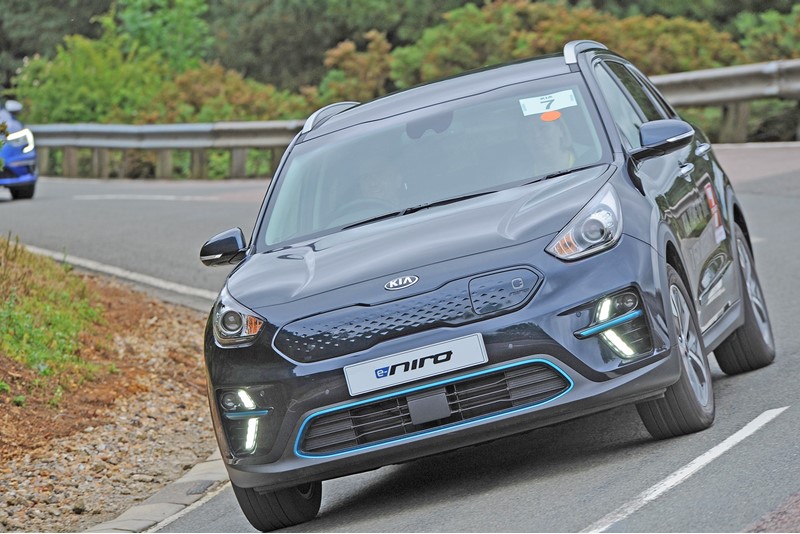
Kia E-Niro 64kWh – P11D: £36,440 (First Edition); CO2: 0; BIK (20%): 16%/£1,166; Range: 282 miles
It’s the car that everybody wants and no one can get. The Kia E-Niro is one of the first affordable long-range electric cars, with a 282-mile range.
Such is demand for the new model that battery suppliers are struggling to keep pace. The manufacturer had sold its first year allocation within two weeks. Orders are now being taken for next year.
The E-Niro is a spacious hatchback with room for all the family. It also comes well equipped, making it ideal for business users.
Range anxiety shouldn’t be an issue. With a real-world range of around 260 miles, the E-Niro should comfortably handle most business trips.
Its 202PS output delivers a decent turn of speed, even if the chassis is a little uninspiring.
Stewart Lightbody said: “The E-Niro is probably the best ‘budget’ EV there is at the moment. It’s slick, responsive and good to drive.”
While there is plenty of equipment on board, our panel felt the car’s interior was a little on the cheap side.
Despite being less expensive than other long-range EVs, the E-Niro still costs about as much as a BMW 3 Series yet, capability aside, it feels like a much cheaper car in comparison.
“You’re paying for the battery development,” added Lightbody. “Without the battery, the E-Niro is not a £36k car.”
Our panel believed that drivers may be likely to accept a less premium car given the benefit-in-kind tax savings, but had bigger concerns over the lack of availability of electric vehicles.
As manufacturers continue to announce new electric models, they are all in relatively small volumes, meaning they are unlikely to become a big part of the fleet car parc any time soon.
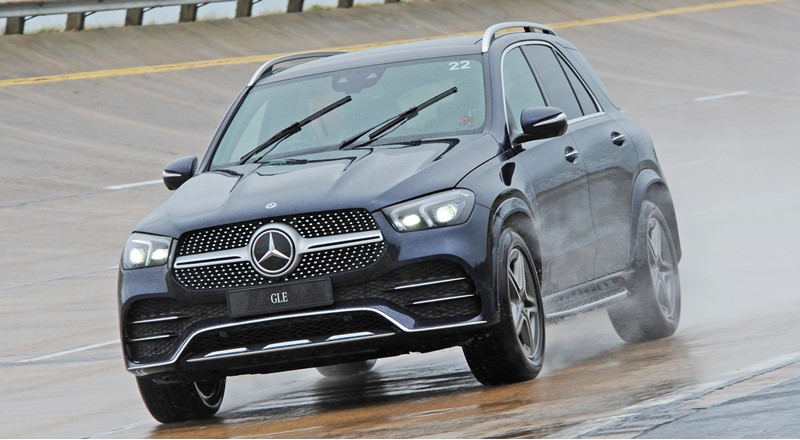
Mercedes-Benz GLE 300d AMG Line – P11D: £54,800; CO2: 162g/km; BIK (20%): 37%/£4,055; MPG: 36.7
Premium SUVs remain popular as drivers consider them as more practical alternatives to traditional executive models.
The GLE is the latest in the segment, aiming to take on the new BMW X5.
For the first time, the GLE is available with seven seats. This is thanks to its new, longer, wheelbase.
Our test model used a tuned version of the 2.0-litre diesel engine found across a number of Mercedes-Benz models.
Here, it is badged GLE 300d and has an output of 245PS.
David Oliver said the GLE “has the wow factor”. He was impressed by how quiet and refined the car was on Millbrook’s Alpine handling course, providing a smooth ride despite having a sporty appearance.
The GLE is only offered in high-spec AMG Line trim. It comes well equipped, but also at a price.
Our panel felt the car would only be suitable for a “select few” within most businesses, with high BIK despite having RDE2 compliance. However, they agreed the GLE is a worthwhile model to test as it gives an insight into some of the technology and features that will make their way down the model range.
The GLE’s new interior was a standout feature, winning praise from all the fleet managers that drove it. It features two high-resolution displays, creating a widescreen effect for the driver.
The infotainment system features the brand’s ‘Hey Mercedes’ voice control system and includes a range of connected features and a 360-degree parking camera.
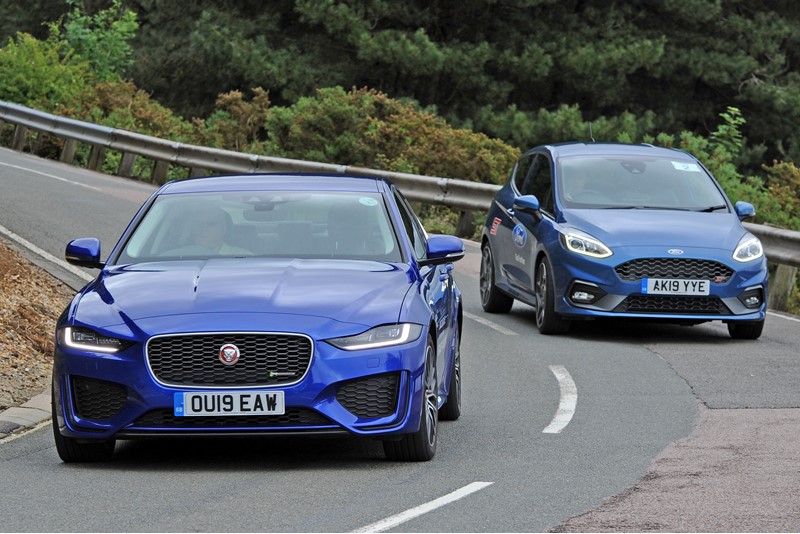
Jaguar XE D180 SE – P11D: £35,800; CO2: 130g/km; BIK (20%): 30%/£2,148; MPG: 50.7
The Jaguar XE might not look very new from the outside but the facelifted model has received a number of key changes, especially inside.
Under the bonnet lives an RDE2-compliant 2.0-litre diesel engine, which develops 180PS and emits 130g/km of CO2.
The XE’s revised interior introduces a new infotainment set-up, with the availability of a twin touchscreen system that mirrors the one first seen in the I-Pace and replaces the majority of the switchgear.
Chris Connors said the XE is “a great looking car with a lot of kerb appeal”.
The panel felt the Jaguar badge was particularly attractive to drivers and said the engine gave the car a significant advantage over its rivals for company car tax.
Ryan Coles added: “It’s great the XE is RDE2-compliant. The biggest challenge for leasing companies is to have systems in place to be able to order and, as the focus on BIK is so great, there are significant opportunities for our drivers.”
While handling, performance and efficiency were commended, our panel felt the XE had a cramped interior and its boot space was limited. Concerns were also raised over the aftersales experience provided by Jaguar dealers, with the panel agreeing that rival brands offer a better service.
The XE was joined by the rest of the Jaguar and Land Rover range at CCIA, including the I-Pace and new Evoque.
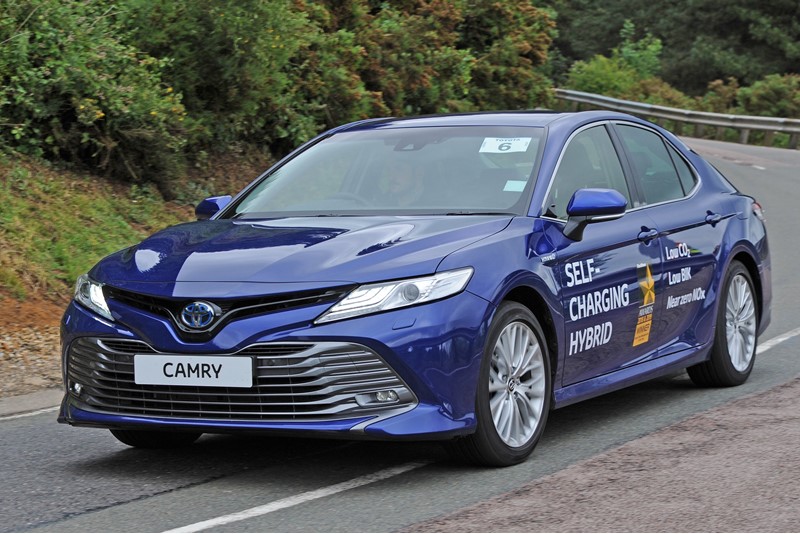
Toyota Camry Design – P11D: £29,820; CO2: 98g/km; BIK (20%): 23%/£1,372; MPG: 53.3
Toyota has brought the Camry back to the UK after more than a decade, feeling that now is the right time to reintroduce the large saloon with a focus on fleets.
There is only one engine, a petrol hybrid that produces 215PS and emits 98g/km of CO2.
It offers drivers a highly-equipped and cost-effective alternative to the Volkswagen Passat, and helps fleet managers introduce alternative powertrains to their fleets.
Stewart Lightbody said the Camry makes for a “great motorway cruiser”. He was particularly impressed by the fuel economy, which at more than 50mpg makes it a credible alternative to a diesel for a high-mileage driver.
David Oliver added: “The BIK is appealing which should be enough to attract drivers at the moment.”
The Toyota’s ‘self-charging’ hybrid system allows for zero-emission running at low speeds, during manoeuvring and when stationary. It captures wasted energy during braking to recharge the battery and, when on the move, the petrol engine powers the car.
Our panel was impressed by the powertrain’s smoothness and commented on the strong performance. No one felt drivers would be deterred by the hybrid powertrain and the panel felt the Camry offered a good, if not class-leading driving experience.
However, the Camry’s interior received less favourable feedback. Most notably, the infotainment system, which uses dated graphics and a confusing user interface.
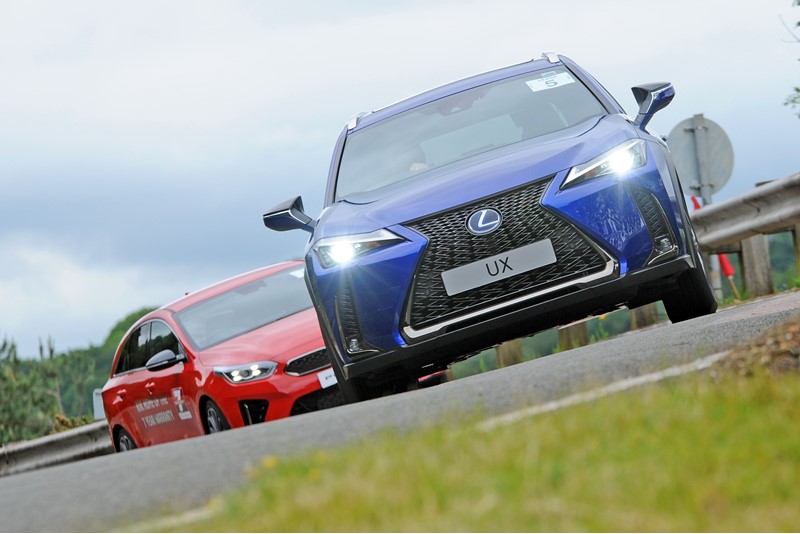
Lexus UX – P11D: £29,730; CO2: 94g/km; BIK (20%): 22%/£1,308; MPG: 53.2
Lexus has a keen eye on the fleet market and its range offers a variety of affordable luxurious models with hybrid engines.
The UX is the latest model to join the Lexus family in the highly lucrative compact SUV sector.
It rivals the likes of the BMW X2 and Volvo XC40, offering competitive pricing and attractive BIK rates.
Like most Lexus models, the UX is only available as a hybrid. The 2.0-litre petrol-electric powertrain develops 176PS, giving it a power advantage over entry-level rivals.
Ryan Coles said: “The hybrid powertrain has its place, when driven to take advantage of its strengths. But for me it is all about making sure you have the right powertrain and fuel for the majority of the journeys you do.
“The CVT gearbox is ‘Marmite’ in that it has positives and negatives. It does work well in the UX provided you don’t want 0-60 in diesel ranges.”
When it comes to styling, our panel felt the UX was a “breath of fresh air” when compared with rivals. Its angular styling gives a modern appearance and a number of fleet managers felt it was the best looking model in the segment.
The interior received praise for having high quality materials although the infotainment system was criticised for being complicated.
Refinement was commended by the panel, which felt the car had excellent motorway manners on Millbrook’s high-speed bowl.





















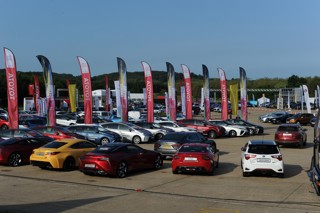
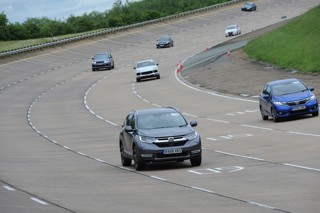
Login to comment
Comments
No comments have been made yet.